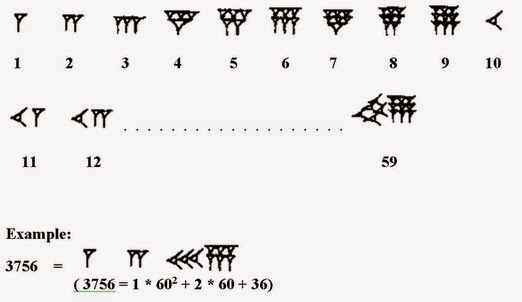
For example, when keeping the score of the winning teams or counting items or days, people in the Western world and some other regions would often write four vertical lines, then cross them with a fifth horizontal line, and repeat the process. Different countries may use different types of representation for this. This system is also sometimes used in games and other simple calculations. When children learn to count, their teachers often use this system to help create a link between a concrete, easy-to-understand system, and a more abstract representation of numbers. These symbols are usually the same, therefore if 1 is represented with A, then 5 would be represented as AAAAA. The unary system represents each number with the same number of symbols as its value. Numbers in the Mayan culture had symbols for zero, one, and five, with special notation for numbers above nineteen. The Egyptian system was very similar, except that there were additional symbols for zero, one hundred, one thousand, ten thousand, one hundred thousand, and one million, as well as special notations for fractions. So for example 32 would be written (using the proper symbols) as CCCTT. Some cultures use simpler representations, like the Babylonian system, which has only two cuneiform symbols, for one (somewhat resembling the letter “T”) and for ten (slightly similar to the letter “C”). The rest of the numbers are represented as multiples or sums. The Hebrew number system uses the Hebrew alphabet to represent numbers from one to ten, multiples of ten, 100, 200, 300, and 400. For example, some Slavic people used the Cyrillic alphabet to represent numbers such as 1 to 9, multiples of 10, and multiples of 100, with special symbols for greater numbers, as well as symbols to differentiate the numerals from the letters. People in many geographic areas had systems of representing numbers, similar to the Roman or the Hindu-Arabic ones. In some cases, the subtraction rules are not used, and numerals are written in succession instead. The subtraction rule is not universal, it only works for these numbers: IV, IX, XL, XC, CD, and CM.


The order is important in the Roman system because a greater number followed by the smaller means that the two need to be added, but a smaller number in front of the larger one means that the smaller number is subtracted from the larger. Roman numerals are based on seven numbers written with the letters of the Latin alphabet: I They are still used today in some contexts, for example on clocks, to represent the hours. Roman numerals were used in the Roman Empire and Europe until the 14th century. It reads ANNO : DECIMO : EDWARDI : SEPTIMI : REGIS : VICTORIÆ : REGINÆ : CIVES : GRATISSIMI : MDCCCCX : (In the tenth year of King Edward VII, to Queen Victoria, from most grateful citizens, 1910). Curiously, numbers are represented by “digits,” the same word that is used to refer to fingers and toes in English and many other languages.Īn inscription in Latin and with Roman numerals on Admiralty Arch in London. Some cultures also used toes, spaces between fingers, and knuckles for counting. Even today people learning to count or who want to illustrate a point about counting in conversation often use fingers. Ten is a common number to use for counting because people have ten fingers, and body parts were often used for counting historically. It is a base-10 system, meaning that it is based on multiples of ten and that it uses ten symbols to represent all numbers. It was further modified and widely adopted around the world because of European trade and colonization. In the Middle Ages, it spread to the Western world through commerce, to replace the Roman numeral system. It was originally developed in India and improved by the Persian and Arab mathematicians. The Hindu-Arabic numeral system is one of the most widely used in the world today. The originally written representations of numbers through symbols evolved independently, but once trade across countries and continents became widespread, people learned and borrowed from each other and the number systems currently in use were created through collective knowledge. It is believed by some researchers that the concept of number was created independently in different regions. There are several ways of expressing numbers in numeric systems. Numbers have been used from ancient times, first in the form of tally marks - scratches on wood or bone, and then as more abstract systems. A number is an abstract mathematical concept representing a quantity.


 0 kommentar(er)
0 kommentar(er)
